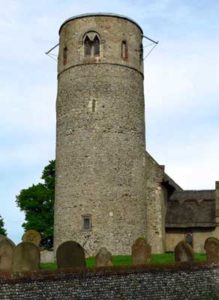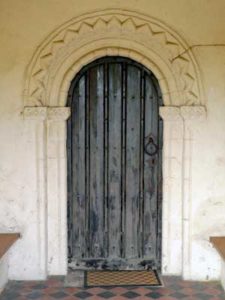Herringfleet St Margaret






































































































St Margarets Church Herringfleet
Where to find this church
Church Information
St Margarets church is located in Herringfleet, a village in Suffolk on the River Waveney and close to Somerleyton with its famous Hall.
This church is usually open to visitors
* denotes external links that open in a new window


Visiting Herringfleet St Margaret
St Margaret’s in Herringfleet is a church which is easy to visit when you are boating on the Broads: moor up in Somerleyton, walk up to the main road, turn left, and it is only a couple of hundreds of yards to the church. Return to your boat by following the road to St Olaves, then turn left onto a footpath between some red brick cottages which leads you to Herringfleet Mill. From there, simply follow the River Waveney back to the moorings.
The nave and the tower were built at the same time during the 12th century. In the tower the flints are small and evenly coursed, except for two bands of larger flints. The belfry sits on a stone string course, and its four openings are made of Caen stone, so are definitely post-Conquest. They have two lights with triangular heads of inverted V slabs, supported in the centre by a central column set back in the wall. Except for the east side, these double heads are set below a rounded super-arch with billet moulding. Between these openings are round-headed slit windows with brick arches, a much later insertion. A bit below the belfry is a single stone-framed window of the 12th century, and in the ground floor a modest rectangular window has been inserted. Nave and chancel now have rendered walls, but the nave and porch are still thatched. The chancel has black pantiles. There remains one early stone-framed window in the north chancel. The nave has quoins made of Caen stone, and the south doorway is 12th century with chevron carvings round the arch and an X decoration on the capitals. It is now protected by the south porch added circa 1830.
The organ is on a west gallery, partly covering the tower arch. This is 12th century and there is an upper doorway above it. The font now stands at the east end of the nave, and it came here circa 1860, while the pews, the pulpit and the panelling all came here in the 18th century. The pews in the chancel face east and have a half-door at the end. The small window in the north chancel has some 14th century glass, perhaps from St Olave’s Priory a mile to the north, and shows a tonsured priest, or perhaps St Olaf? The large east window is filled with glass installed between1825-1832. A box full of glass, dating from late 14th century to the early 18th century, was bought in Cologne, and most of it came from different buildings there, much of it from the Mother House of the Franciscans, the Minorite Friars. There is no organised theme, pieces are just fitted where there is space for them. The two south chancel windows have some 19th century glass, made by Robert Allen, Lowestoft, and include some tulips – unique in Norfolk & Suffolk, very rare! There are two 15th century panels in the south-east one, possibly St Margaret and St Catherine.
Conclusion: open and welcoming village church with spectacular east window


